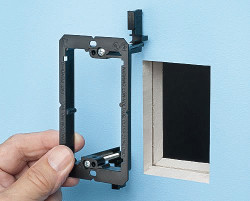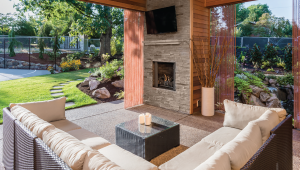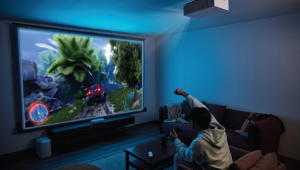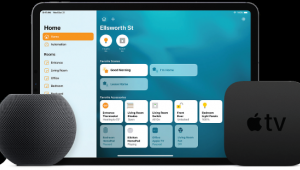I was lending a hand to some friends when they were doing their own house remodel, and I cut all of the round holes for the light canisters in the ceiling and the rectangular holes for speakers in the walls by using a Dremel rotary tool with the cutting guide attachment and the drywall bit. Makes short work of the job, and gives a much cleaner cut than a drywall saw.
https://www.youtube.com/watch?v=tSJR5dDOo5U
Oh, and I do not in any way work for Dremel, but if they want to throw me a bone - hey, I'm not proud! I could use some extra bucks to get that 65" LG OLED UHD TV!!!

 Now that we know we can get wire to our new speakers, we need to cut in a wall box like the
Now that we know we can get wire to our new speakers, we need to cut in a wall box like the  As a general rule, round speakers tend to look better in the ceiling as they blend in with existing, round can lights, whereas rectangular speakers fit in with other squarish items on the wall. Your new speakers will come with a cutout template like the one shown here, which makes installation much easier. If you’re installing in the ceiling, you can tape the template to the ceiling and run a
As a general rule, round speakers tend to look better in the ceiling as they blend in with existing, round can lights, whereas rectangular speakers fit in with other squarish items on the wall. Your new speakers will come with a cutout template like the one shown here, which makes installation much easier. If you’re installing in the ceiling, you can tape the template to the ceiling and run a  After you finish wiring, install the wall box at the home run and pull the speaker wire through a passthrough plate like the
After you finish wiring, install the wall box at the home run and pull the speaker wire through a passthrough plate like the 































































